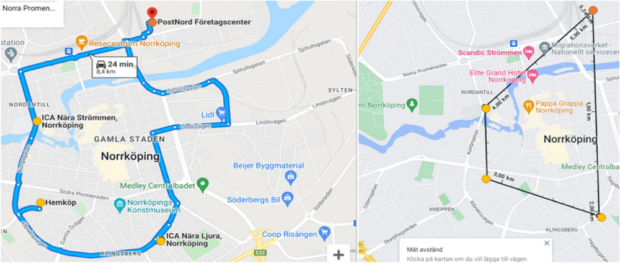Swedish researchers funded by the University of Gävle have just published a paper in which they conduct systems analyses to assess the environmental, economic, and delivery time impact of large drones for delivery scenarios to pick-up centers between mid-size cities predominantly in rural areas, and deliveries within city limits compared with electric and diesel trucks.
Electric drones as an autonomous mode of transport are scaling up to transform last-mile goods delivery, raising an urgent need for assessing impacts of drone transport from a systems perspective.
Results show that large drones have lower emissions than diesel trucks for deliveries in rural areas and that drones don’t compete with electric trucks, mainly due to the high energy demand required for take-off and landing for each delivery.
Furthermore, we show that electric drones are an economically more cost-effective option than road-bound transport modes such as diesel and electric trucks due to the high degree of automation, and also provide the fastest delivery times.
Our analysis provides unique insights that drones can address rapid electrification and emergency applications due to low costs, high flexibility, and fast operations.
However, for regulators and practitioners to realize it as an emission-friendly option it is necessary to determine the optimal size of drones, particularly for use cases in urban areas, avoid very low landings for deliveries, and have home deliveries instead of pick-up points.
The full paper can be downloaded here.
Top Image: The shorter truck route within the city (left) with a total distance of 8.4 km and the drone path (right) with a total distance of 5.2 km The starting and end point are indicated by an orange circle and the three stops are indicated by yellow circles.
Source: nature

